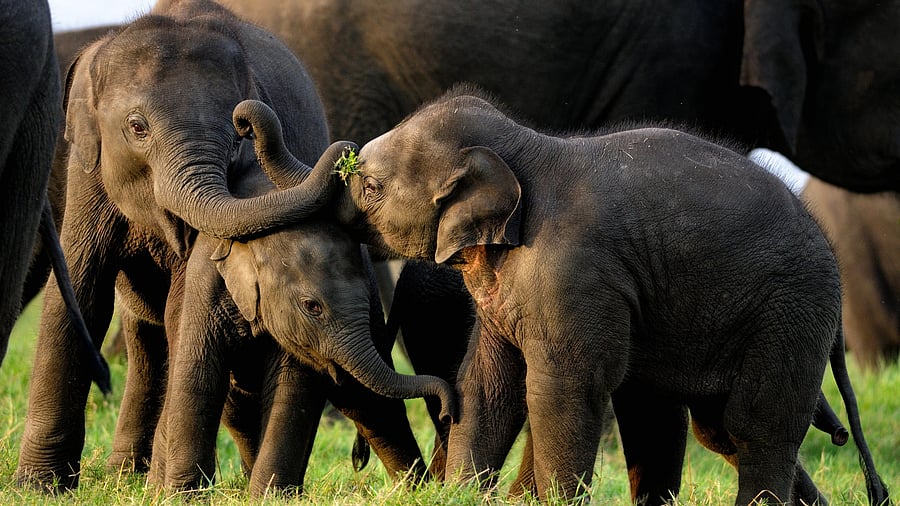
An image showing elephants.
Credit: iStock Photo
A recent survey has revealed that Karnataka has the highest wild elephant population in India, estimated at 22,446. However, the number is lower than the 2017 figure of 27,312, according to the country's first-ever DNA-based count.
The study titled 'Status of Elephants in India: DNA based synchronous all India population estimation of elephants', has also looked into the population of wild elephants in different parts of the country.
India is home to the largest population of wild Asian elephants. The wild-being is said to have historical relationship with humans dating back to the Harappan civilisation, with elephants playing crucial roles in the economy and military, according to the study.
The study shows that the southern States of India are home to the most number of elephants, with Karnataka being on the top of the list, followed by Tamil Nadu and Kerala. The three southern States account for 53.16 per cent of elephants in India.
Karnataka recorded a population of 6,013 elephants, Tamil Nadu has 3,136 elephants and Kerala 2,785, taking the total number to 11,934 in the Western Ghats.
The study has also looked into the number of elephants in other parts of the country, where Central India and Eastern Ghats have 1,891 elephants; Shivalik Hills and Gangetic Plains recorded 2,062 elephants, and 6,559 in the North Eastern Hills and Brahmaputra Flood Plains.
Assam stands as an exception in the northern part of India as it is home to 4,159 elephants, which is more than the count in Tamil Nadu and Kerala.
The government released the long-delayed report on Tuesday, nearly four years after the survey began in 2021. Officials said the delay was due to the complex genetic analysis and data validation involved in the exercise.
An official said that the latest results cannot be compared with the 2017 numbers due to a change in methodology.
"This is the first time DNA analysis of dung samples has been carried out. The results will serve as a new baseline for future monitoring and estimation. The methodology will be further refined, and comments have been invited from all wildlife wardens for this purpose," the official said.
Scientists collected 21,056 dung samples from across elephant landscapes and used DNA fingerprinting to identify individual animals, much like identifying humans through their genetic code. The total field effort covered nearly 6.7 lakh km of forest trails and included over 3.1 lakh dung plots.
The 2025 exercise, carried out jointly by the Environment Ministry, Project Elephant and the Wildlife Institute of India, establishes a new scientific baseline for future monitoring and conservation planning.
The new count used a three-phase process combining ground surveys, satellite-based mapping and genetic analysis.
In the first phase, forest teams used the M-Stripes app to record elephant presence during extensive foot surveys.
The second phase assessed habitat quality and human footprint using satellite data.
The third phase involved DNA extraction from dung to identify 4,065 unique elephants, with scientists using the mark-recapture model to estimate the overall population.
(With PTI inputs)
